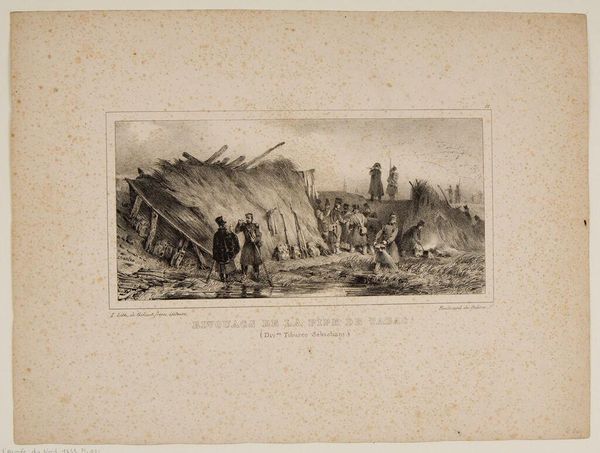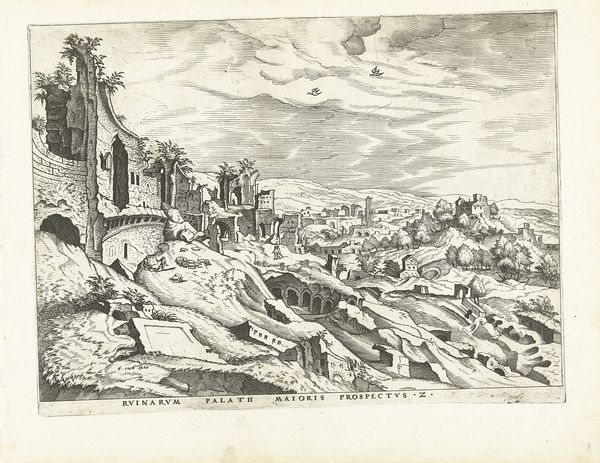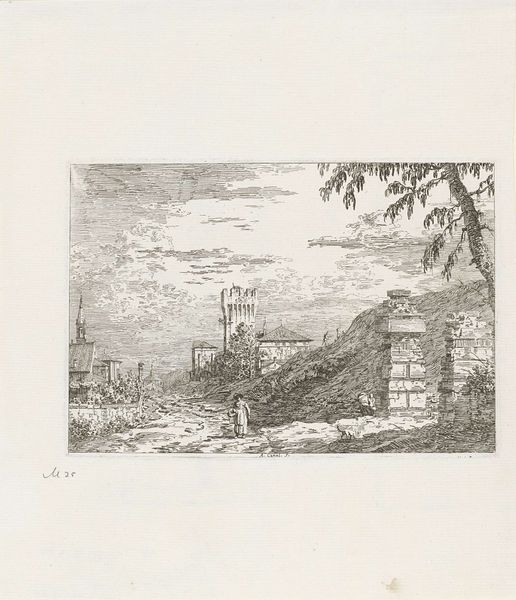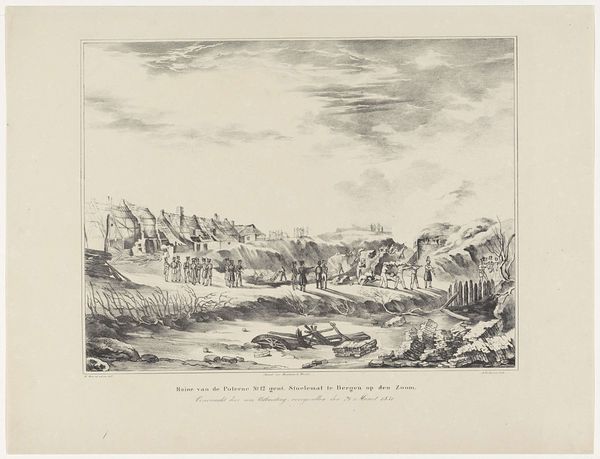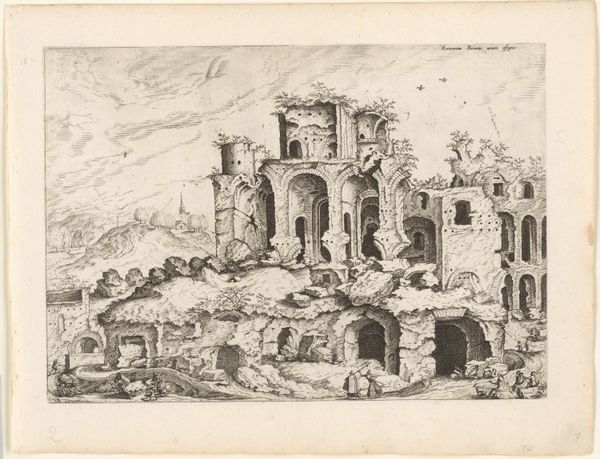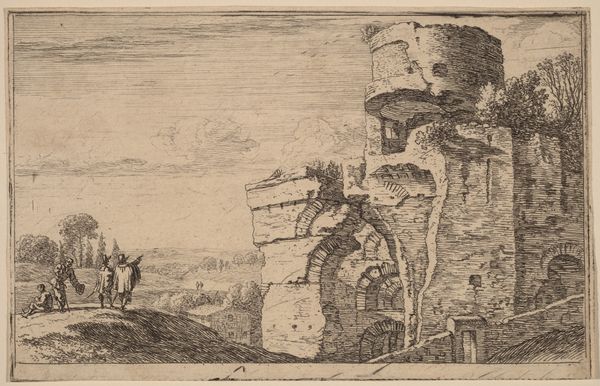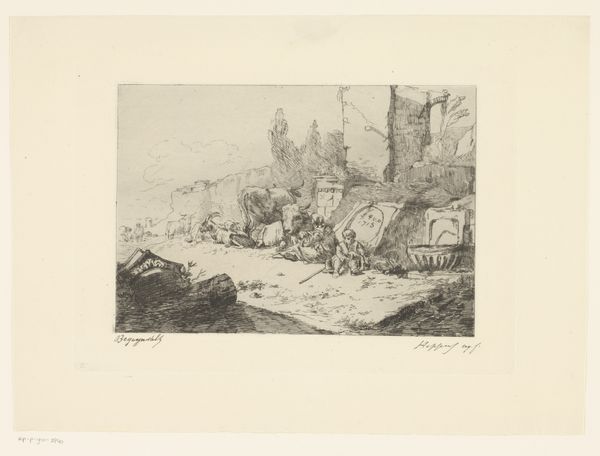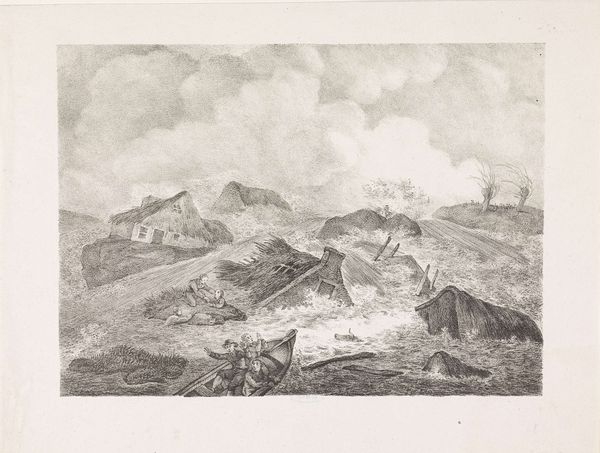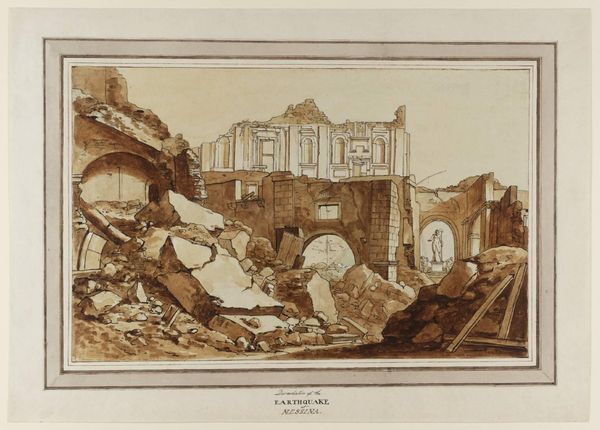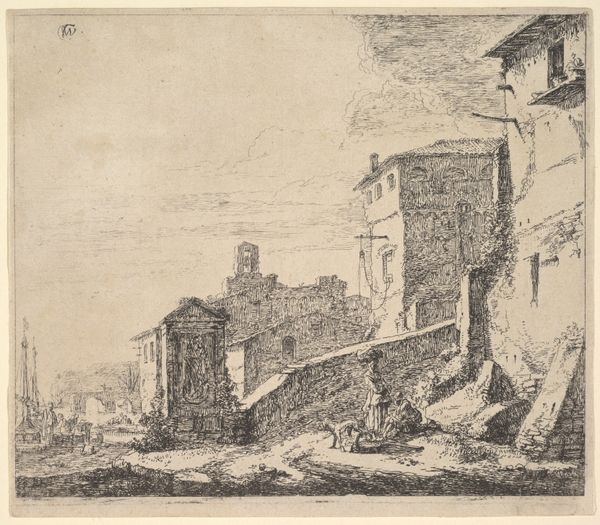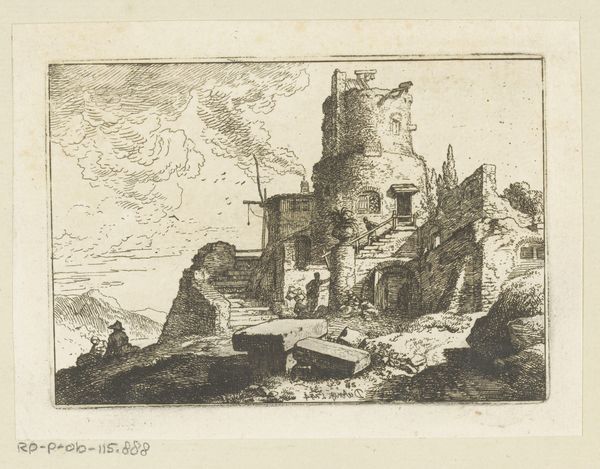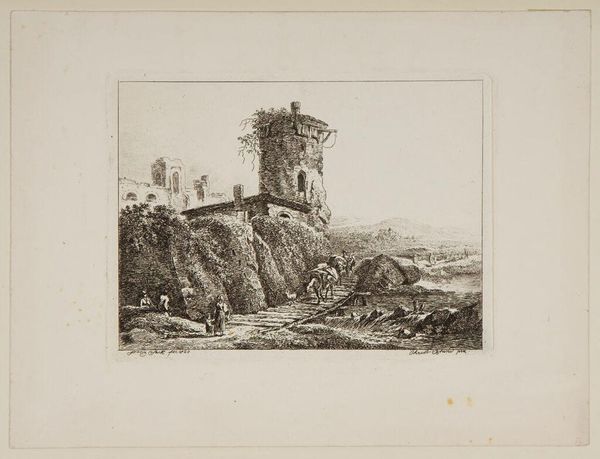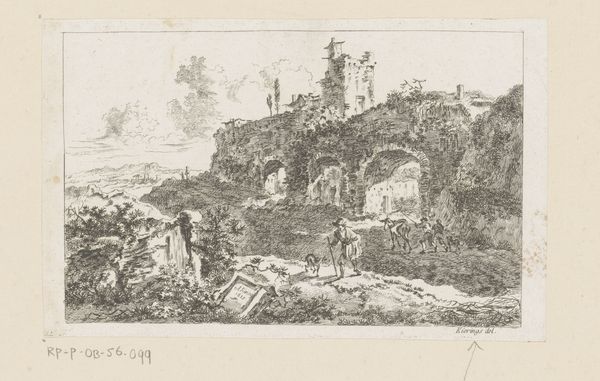
print, etching
#
baroque
# print
#
etching
#
landscape
#
etching
#
figuration
Dimensions: height 142 mm, width 209 mm
Copyright: Rijks Museum: Open Domain
Curator: I am drawn to the scene's overall melancholy. This barren, almost lunar landscape punctuated with ruins has a pensive aura. Editor: Here we have Canaletto's "Landscape with Praying Pilgrim," created sometime between 1707 and 1768. It is a baroque-style etching, a genre he explored alongside his famous cityscapes. Curator: That’s a polite way to describe a place that looks ravaged! The only spots of relative order are the pilgrim and the structure with the cross. Otherwise, it feels almost apocalyptic, wouldn’t you agree? Editor: Canaletto’s landscapes weren't just scenic views; they often intertwined with socio-political commentaries. Ruins frequently symbolize decay, a kind of memento mori—a meditation on mortality. But the praying figure... that is really what speaks. Curator: The composition draws your eye upward to that architecture perched precariously on the hill. What's left of it, anyway. The whole landscape seems like it’s surrendering to time. Editor: It prompts us to reflect on enduring hierarchies. Consider who has the luxury of spiritual contemplation versus those toiling away in the boats or beneath the makeshift shelter on the left. Notice the imbalance in visual weight as a symbolic statement of disparity between those engaging in active labor, versus a posture of meditative supplication? Curator: A bleak point, if true. I do see what you mean; there's a resigned sort of tension, isn't there? All rendered in stark detail. Even the light feels…reluctant. Editor: Indeed. It invites consideration on issues like class, access, labor, and personal reflection. It's a lens through which we can explore inequalities present today. Art of the era always holds so much symbolism that can prompt endless thought and perspective. Curator: In the end, art allows everyone to reach a point where thoughts can be freely formulated! And how intriguing that a picture from so long ago can cause these musings today.
Comments
No comments
Be the first to comment and join the conversation on the ultimate creative platform.
